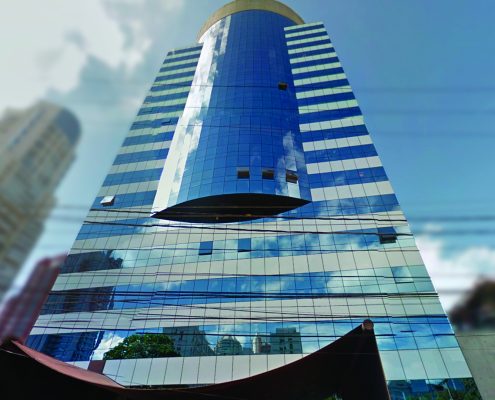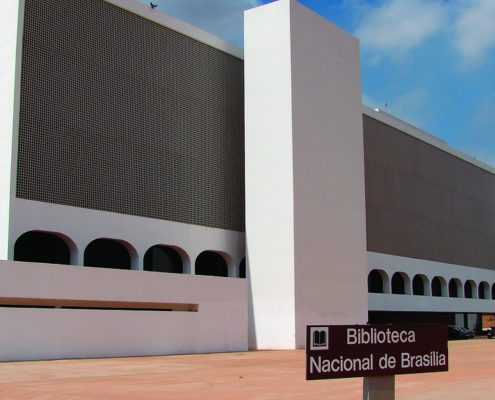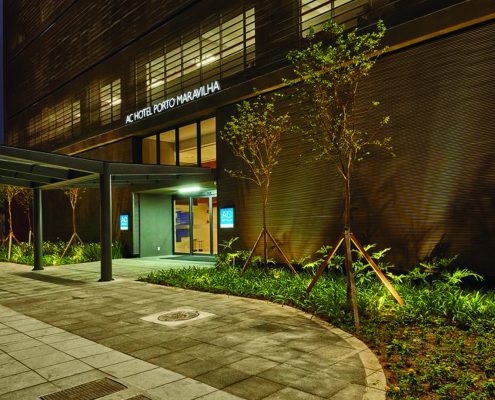Posts
Technologically advanced systems provide on-demand comfort in large houses
Variable refrigerant flow (VRF) technology is relatively new to the U.S., yet it has quickly become a very popular option in the commercial market. VRF is now moving into the residential market as well as more and more high-end homeowners — and custom home builders — are learning about the technology’s ability to provide on-demand heating or cooling in multiple zones.
Many manufacturers are responding to this trend by offering VRF systems that are designed specifically for residential applications. These units often feature smaller footprints, lower profiles, and quieter operation as well as higher efficiencies, which are designed to appeal to the most discerning homeowner.
WHY VRF?
Homeowners do not lack options when it comes to choosing HVAC equipment for their high-end homes, so why should they consider VRF? It all comes down to efficiency, said CJ Corbet, southwest sales engineer, Fujitsu General America Inc. “Our products, such as the J-II line, use algorithms to optimize highly efficient components, such as variable-speed compressors and fan motors, internal subcooling, and electronic expansion valve modulation, which help VRF systems out-perform traditional central heating and cooling in like-for-like applications.”
But in residential applications, zoning is where VRF systems really shine, noted Corbet.
“With VRF, we are able to put a unit in each room and only heat or cool the room that is occupied,” he said. “This eliminates heating or cooling rooms that aren’t occupied, which saves energy.”
Energy savings, precise temperature control, and exceptional comfort definitely make VRF systems attractive to homeowners, said Chuck Hughes, director of commercial sales, LG air conditioning technologies, LG Electronics USA Inc.
“Unlike conventional systems, which set a single temperature for an entire home, VRF systems offer the flexibility to create dedicated zones that allow for precise temperature control based on homeowners’ preferences. This lends itself to increased efficiency and improved comfort in a way that conventional systems simply can’t rival.”
Some VRF systems, such as LG’s Multi V™ S line, also offer heat recovery technology, which enables homeowners to heat and cool different areas of their homes simultaneously. This is especially beneficial for homes that have gyms, for example, which the owners would like to keep cool during the winter, even though heat is required for the living areas.
“In this case, heat recovery systems could repurpose the return heat from the gym to warm up the living area, which in turn, increases the energy efficiency,” said Hughes. “The return heat can also be used to heat a pool, which means homeowners are getting multiple uses for the energy they are paying for.”
In addition to energy efficiency and personalized comfort, VRF systems offer design flexibility and quiet operation, inside and out, said Michelle Robb, director of residential marketing, Mitsubishi Electric US Inc. Cooling & Heating division.
“VRF systems feature a compact footprint, which requires less outdoor space, and with long line lengths, the system allows maximum flexibility in installation,” she said. “There are also a variety of indoor unit styles available depending on the preference of the homeowner or the installation requirements.”
While some might think VRF systems are expensive, they can actually cost less over the course of their lifetimes than traditional systems, said Robb. “In a retrofit, there is existing infrastructure that may be reused depending on the choice of indoor units. In new construction, the initial cost of the equipment is typically slightly more expensive, but between reduced installation, labor costs, and operational costs due to impressive efficiencies, VRF systems can quickly become a more economical option — all while providing better comfort.”
NO LIMITS
Thanks to advancements in cold-climate technology, VRF systems can now be installed in just about any geographic area. For example, Mitsubishi Electric’s S-Series and CITY MULTI® VRF systems, both of which can be used in residential applications, can provide up to 100 percent heating output at 0°F and 83 percent heating capacity at minus 13°F, thanks to its Hyper-Heating® technology.
“With this technology, VRF systems are now a good fit for any home regardless of location, layout, or homeowner needs,” said Robb.
It also does not matter whether VRF systems are being installed in existing homes or in new construction, as they work well in both types of applications.
“With older homes, space often doesn’t allow for the addition of bulky ductwork, but with our duct-free VRF, homeowners are able to preserve architectural features without requiring a redesign of the space or any major construction,” said Hughes. “In the case of new construction, owners desiring a clean aesthetic can eliminate building soffits for ductwork, which also translates to more usable square footage.”
In Corbet’s opinion, all large homes would benefit from a VRF system rather than a traditional system, because the more rooms there are in a house, the better options there are for zoning.
“VRF systems are also very well rounded for both extreme heating and cooling situations, so they cover a wide variety of geographical locations. And homeowners benefit from low energy costs and the comfort of ‘on-demand’ heating or cooling through zoning.”
And the good news for contractors is that VRF design is handled the same way in both residential and commercial applications.
“Zone loads are required to select the appropriate unit for specific spaces, and once the units are selected, our design tool is used to lay out the configuration,” said Corbet. “That tool will catch any limitations that the project might exceed so that each project is designed correctly. For all VRF applications, controls are universal in that they can be used in any configuration.”
While the controls for VRF systems are basically the same for all types of applications, residential controls may be slightly different.
“Since VRF can be installed in large-scale commercial applications, such as school campuses, we offer additional controls for those types of installations,” said Robb. “VRF systems are also compatible with our kumo cloud™ programmable controller app, which offers remote control from anywhere in the U.S. through a smartphone, tablet, or computer. The interface has the ability to control multiple locations and indoor units, program cooling and heating events, indicate filter replacement, and monitor errors in the system.”
For any VRF installation, be it residential or commercial, contractors still need to run a room-by-room load calculation to determine the number of indoor units required to appropriately condition the space, said Hughes. “Since VRF systems can be ducted or non-ducted, contractors are able to select the systems that work best for each application, and end users can choose the indoor units that best complement their interior décor. Combine that flexibility with zoning control, energy efficiency, and low maintenance, and there is no question that homeowner demand for VRF will continue to grow.”
Font: http://www.achrnews.com/articles/135252-vrf-moving-into-high-end-homes
Portfolio Items
USA HEADQUARTERS

Florida
4085 LB McLeod, Suite A
Orlando, FL 32817
+1 (407) 286-0982
mstc@mstcmechanical.com
License: CMC056753
TAGS
Powered by












